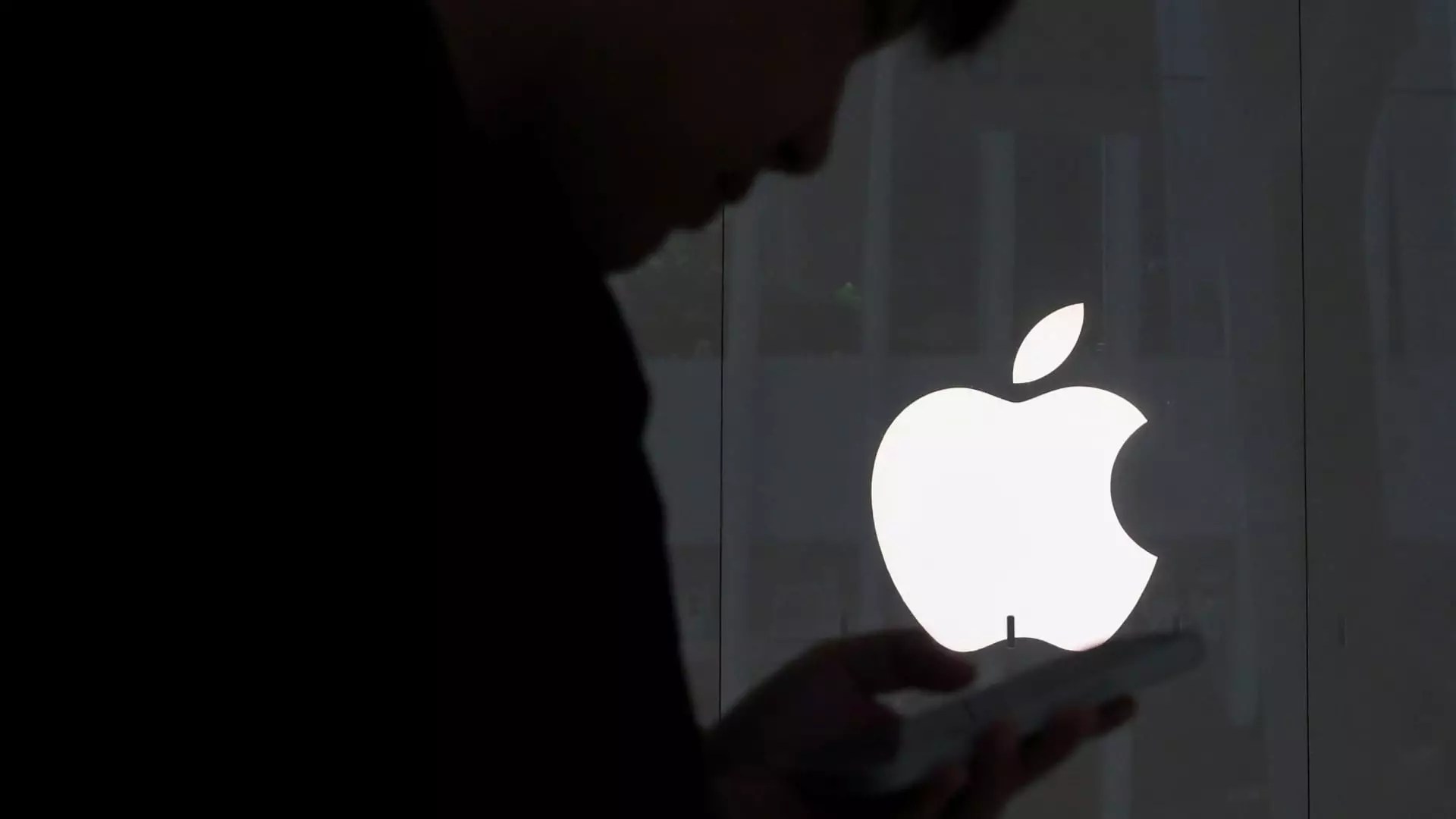Recent developments surrounding Apple Inc. have set alarm bells ringing for informed investors. Needham’s analyst Laura Martin has downgraded the tech giant’s stock from “buy” to “hold,” marking a crucial pivot in market sentiment. This shift is not merely a fleeting judgment; it is underscored by several critical assessments of the company’s future growth potential and its current standing in an increasingly competitive landscape.
Apple’s current valuation at approximately $203.27 per share is arguably inflated, especially when juxtaposed against its peers in the “Magnificent Seven” stock group. The perceived inefficiency of this valuation does not seem to correspond with Apple’s growth trajectory, which is facing considerable slowing, contrary to what one might expect from a titan in the tech industry.
Valuation Concerns: Is Apple Truly Worth Its Price Tag?
The crux of Martin’s argument lies in Apple’s forward earnings multiple, which stands at a staggering 26 times. This figure should raise eyebrows, as it is not only higher than its major tech counterparts but is also approximately 50% above Apple’s 10-year average. In a prudent investment landscape, such metrics should incite skepticism rather than reassurance.
Moreover, the rationale for this premium valuation appears soft, especially when you compare Apple’s recent growth with that of its competitors. The likes of Meta and Google have been reporting much faster revenue growth rates—doubling or even tripling Apple’s numbers in some cases. For long-term investors, there should be an inherent risk in holding onto an asset that does not seem to justify its lofty valuation through tangible growth metrics.
The Threat of Competitive Disruption
Inherently, Apple’s strength lies in its ecosystem—the seamless integration of its devices and services. Yet, as competition intensifies, this very ecosystem may become a liability rather than an asset. Martin has astutely pointed out that competitors, particularly Meta and Google, are beginning to articulate strategic visions that could potentially eclipse Apple’s stronghold.
Both companies are focusing on new hardware, specifically augmented reality glasses, which show promise for the next phase of user interaction—a departure from the smartphone era. Conversely, Apple scrapped its own AR glasses project, raising critical questions about its innovation pipeline. The fear here is not merely that Apple could lag behind; it’s that it may become irrelevant in a rapidly changing technological landscape.
The Departure of Creative Leadership
One of the most troubling signs for Apple, as highlighted by Martin, is the departure of design chief Jony Ive to OpenAI. Ive’s influence transcends mere product aesthetics; he was integral to the design ethos that fueled Apple’s phenomenal success with products like the iPhone and the iPad. His new trajectory points toward a vision that deviates from the traditional screen, indicating a transformative shift in consumer technology.
If Ive achieves success with his vision for a new form factor, Apple may find itself in a precarious position. Lacking requisite innovation can jeopardize a company’s competitive standing, especially when a former key player throws down the gauntlet from a rival platform.
Risks Beyond Competitors: The Broader Economic Landscape
The factors contributing to Apple’s precarious position extend beyond mere competition. The current economic landscape presents a kaleidoscope of challenges—from fluctuating consumer spending to regulatory pressures and tariff-related uncertainties. All these variables complicate Apple’s path toward sustained revenue growth, particularly in its iPhone and Services verticals.
The looming risk of losing the $20 billion that Apple earns annually from Google for being the default search provider adds another layer of vulnerability. If market conditions deteriorate further and consumers tighten their wallets, Apple could face a perfect storm that severely impacts its profitability.
Market Reluctance and Analyst Divides
Despite Martin’s cautious outlook, it’s noteworthy that the majority of analysts maintain a bullish view on Apple’s stock, with 34 out of 51 still rating it as a buy or strong buy. This dichotomy raises intriguing questions about market psychology versus grounded financial analysis. One could argue that a herd mentality can often lead to misguided overconfidence, fostering an environment where caution is tossed aside in favor of optimism, irrespective of the underlying data.
As Apple stands at a pivotal moment, it remains crucial for potential investors to exercise diligence. The alarming insights from a diminished growth forecast, competitive threats, leadership changes, and economic uncertainties compel a reassessment of whether Apple’s stocks are genuinely the secure investment they are often portrayed to be. While some analysts cling to hope, the compelling data suggests that caution should be the order of the day.


Leave a Reply